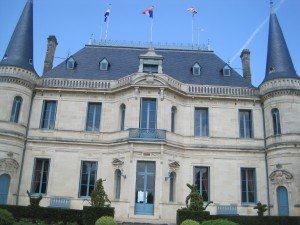1976 Château Palmer Margaux Bordeaux France Wine Tasting Note
3973 Views
|
Very over ripe, figgy nose, with wet earth and jam. From there, you found secondary notes of tobacco and mushroom. Soft in texture, the ripe, finish was odd, meaning that it was not bad or good, but the intense over ripe character of the fruit, and low acidity was more interesting than pleasureable. Served blind, I never cam close to guessing it. 3,973 Views Tasted Apr 13, 2017 |

When to Drink Chateau Palmer, Anticipated Maturity, Decanting Time
Chateau Palmer is not a wine for drinking young. The wine can be tannic, concentrated and reserved, in its youth. Young vintages can be decanted for an average of 2-4 hours, give or take. This allows the wine to soften and open its perfume.
Older vintages might need very little decanting, just enough to remove the sediment. Chateau Palmer is usually better with at least 12-15 years of bottle age. Of course, that can vary slightly, depending on the vintage character. Chateau Palmer offers its best drinking and should reach peak maturity between 15-45 years of age after the vintage.
Serving Chateau Palmer with Wine, Food, Pairings
Chateau Palmer is best served at 15.5 degrees Celsius, 60 degrees Fahrenheit. The cool, almost cellar temperature gives the wine more freshness and lift.
Chateau Palmer is best paired with all types of classic meat dishes, veal, pork, beef, lamb, duck, game, roast chicken, roasted, braised, and grilled dishes. Chateau Palmer is also good when matched with Asian dishes, rich fish courses like tuna, mushrooms, and pasta.

